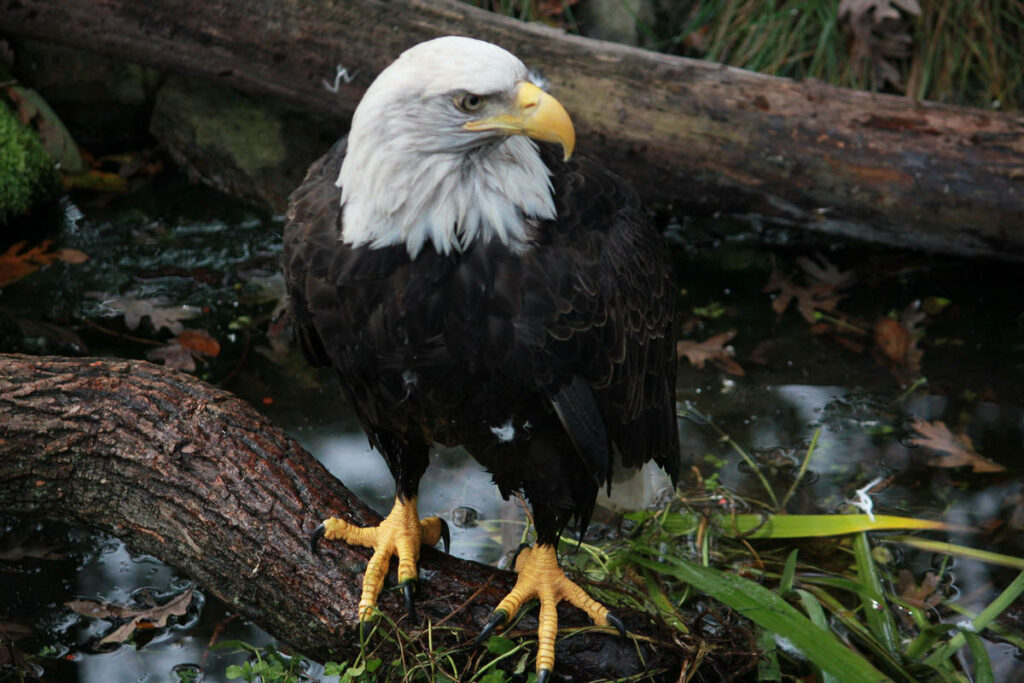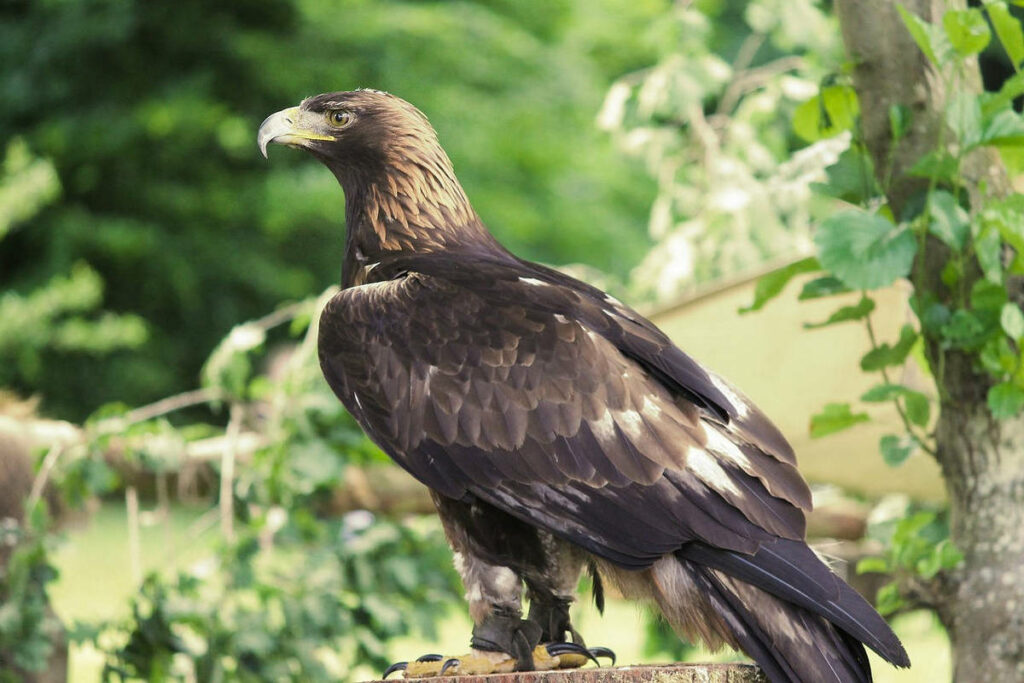Introduction
Nestled in the heart of the Rocky Mountains, Glacier National Park is a breathtaking wilderness wonderland that attracts nature enthusiasts and wildlife lovers from around the world. Two of the most awe-inspiring and iconic creatures found in this pristine ecosystem are bald eagles (Haliaeetus leucocephalus) and golden eagles (Aquila chrysaetos). In this article, we will delve into the world of these majestic birds, exploring their habitat, behavior, significance, and conservation efforts within Glacier National Park.
The Eagles of Glacier National Park
Bald Eagles
Overview
The bald eagle, with its striking white head and tail, is a symbol of freedom and strength in the United States. These magnificent raptors can be frequently spotted soaring over the diverse landscapes of Glacier National Park, making it one of prime locations for bald eagle enthusiasts.
Habitat
Bald eagles in Glacier National Park are commonly found near large bodies of water such as lakes and rivers. The park’s numerous pristine lakes, including Lake McDonald and Bowman Lake provide ideal fishing grounds for the eagles, making them a common sight along their shores.
Behavior
These eagles are known for their impressive hunting skills. They primarily feed on fish but are opportunistic predators, occasionally preying on waterfowl and small mammals. Their sharp talons and powerful beaks make them formidable hunters. Bald eagles are also known for their spectacular aerial displays involving high-speed dives known as “stoops” to catch their prey.

Image Credit: Shakespeare1980
Golden Eagles
Overview
Golden eagles are another magnificent species that call Glacier National Park home. Unlike bald eagles, they are known for their golden-brown plumage and piercing eyes. These birds of prey are well-adapted to the park’s rugged terrain and are equally captivating to observe.
Habitat
Golden eagles tend to inhabit the park’s higher elevations and mountainous regions. They are often seen nesting on cliffs and rock outcroppings, where they have a commanding view of their territory. This habitat preference allows them to hunt for a variety of prey, including marmots, rabbits, and other small mammals.
Behavior
Golden eagles are formidable hunters, relying on their powerful wings and keen eyesight to locate prey. They are known for their stoop-and-swoop hunting technique where they descend rapidly to capture their quarry. These eagles are also known for their extensive migrations with some individuals traveling thousands of miles each year.

Image Credit: manfredrichter
The Significance of Eagles in Indigenous Cultures
Eagles hold a special place in the cultural and spiritual traditions of many Indigenous peoples, including the Blackfeet and Salish-Kootenai tribes who have ancestral ties to the lands within Glacier National Park. The bald and golden eagles are considered sacred birds and symbols of strength, wisdom, and freedom.
Blackfeet Nation
The Blackfeet Nation, whose ancestral homeland encompasses parts of the park, has a deep cultural connection with eagles. Eagles are central to their traditional ceremonies, symbolizing a spiritual link between the earthly and spiritual realms. The feathers of eagles are highly prized for their use in regalia and religious rituals.
Salish-Kootenai Tribes
The Salish and Kootenai tribes, whose ancestral territories overlap with the park’s boundaries, also hold eagles in high regard. Eagles are considered protectors and messengers, and their feathers are used in ceremonies, headdresses, and other cultural items.
Conservation Efforts
While Glacier National Park provides a protected habitat for eagles, these iconic birds still face various threats in the modern world. Conservation efforts are crucial to ensure their continued presence and well-being in the park.
Legal Protection
Both bald and golden eagles are federally protected under the Bald and Golden Eagle Protection Act and the Migratory Bird Treaty Act. These laws make it illegal to harm, disturb, or possess eagles, their nests, or feathers without the proper permits.
Habitat Conservation
Efforts to preserve and restore the natural habitats of eagles are ongoing within Glacier National Park. This includes protecting nesting sites, preserving clean water sources, and maintaining the health of the park’s ecosystems.
Public Education
Raising awareness among park visitors about the importance of responsible wildlife viewing and the significance of eagles in the park’s ecosystem is a key component of conservation efforts. Educational programs and interpretive displays help promote a deeper understanding and appreciation of these majestic birds.
The Thrill of Eagle Watching
Observing bald and golden eagles in their natural habitat is a thrilling experience for wildlife enthusiasts and photographers. Glacier National Park offers numerous opportunities for eagle watching, here are some tips to maximize your chances of spotting these regal birds:
Timing Matters
Eagles are more active during the early morning and late afternoon hours, making these times ideal for observation. Sunrise and sunset are often the best times to catch them in action.
Bring Binoculars and Cameras
To get a closer look at eagles soaring in the sky or perched on a distant tree, bring a pair of binoculars or a telephoto lens for your camera. This equipment will help you capture their beauty from a respectful distance.
Visit Known Eagle Hangouts
Local rangers and experienced wildlife enthusiasts can provide valuable information about the best places to spot eagles. Lakeshores, riverbanks, and high mountain viewpoints are common eagle hangouts.
Conclusion
Glacier National Park, with its rugged landscapes and diverse ecosystems, is a haven for both bald and golden eagles. These majestic birds symbolize freedom, strength, and the importance of preserving the natural world. By understanding their habitat, behavior, cultural significance, and ongoing conservation efforts, visitors to this pristine wilderness can develop a deeper appreciation for the magnificent eagles that call Glacier National Park their home.
Remember, responsible eagle watching ensures that future generations will have the privilege of witnessing these incredible creatures in their natural environment.
As we conclude our exploration of eagles in Glacier National Park, it’s essential to recognize that the conservation of these magnificent birds is part of a broader mission to protect our natural heritage. The fate of eagles is intricately linked to the health of their ecosystems, and by safeguarding their habitats, we are also preserving the incredible biodiversity and beauty of the park itself. Glacier National Park, like many other protected areas around the world, serves as a living testament to our commitment to stewardship and the belief that these natural wonders are worth preserving for generations to come.
Ultimately, the presence of eagles in Glacier National Park is not just a testament to their resilience but also a reflection of our responsibility as stewards of the environment. By cherishing these majestic birds and the pristine wilderness they inhabit, we honor our connection to nature and our shared obligation to safeguard the delicate balance of life on our planet.
As you explore the breathtaking landscapes and observe the soaring eagles of Glacier National Park, please take a moment to reflect on the significance of this unique place and the role each of us plays in its protection.

